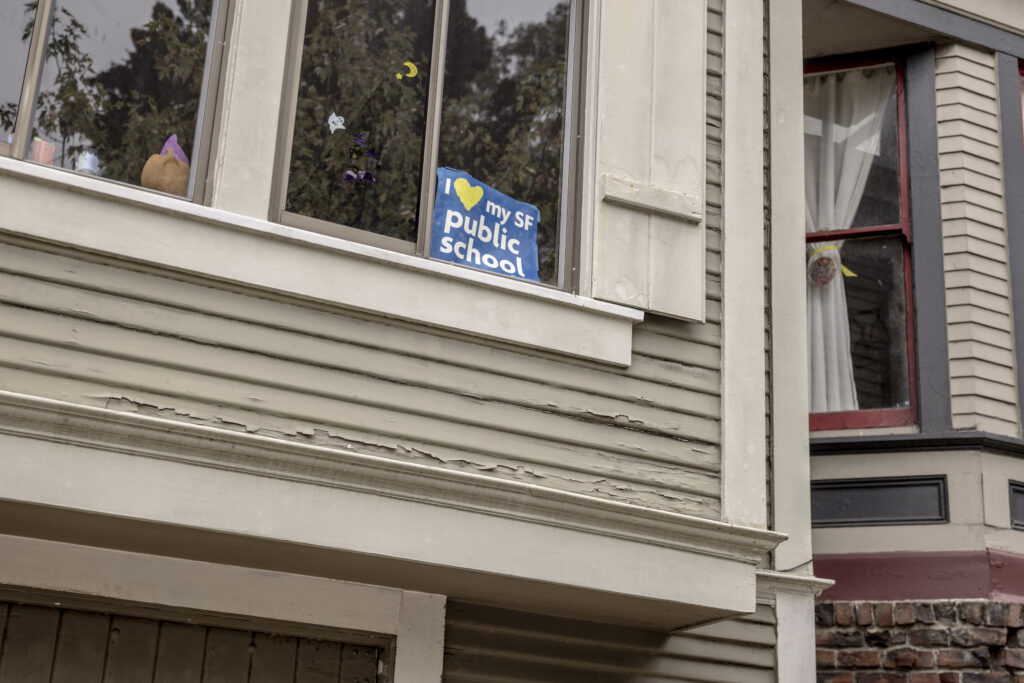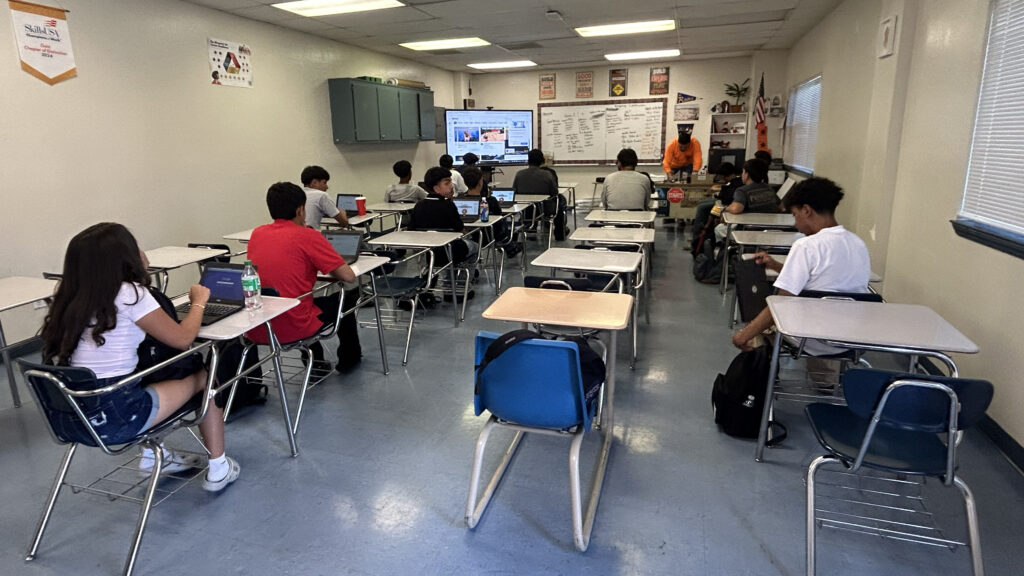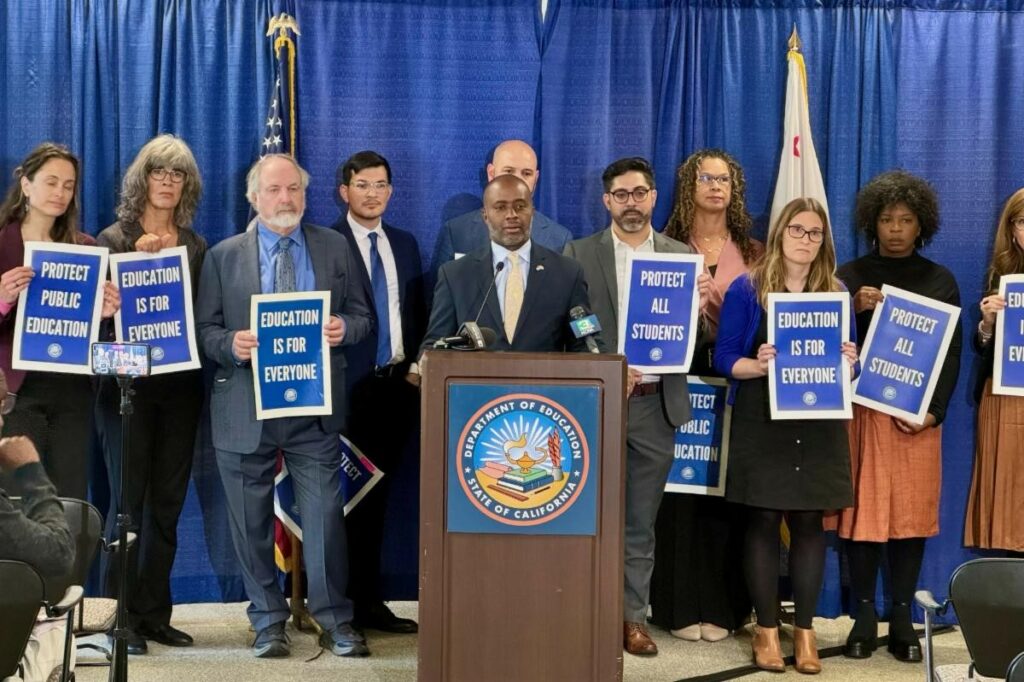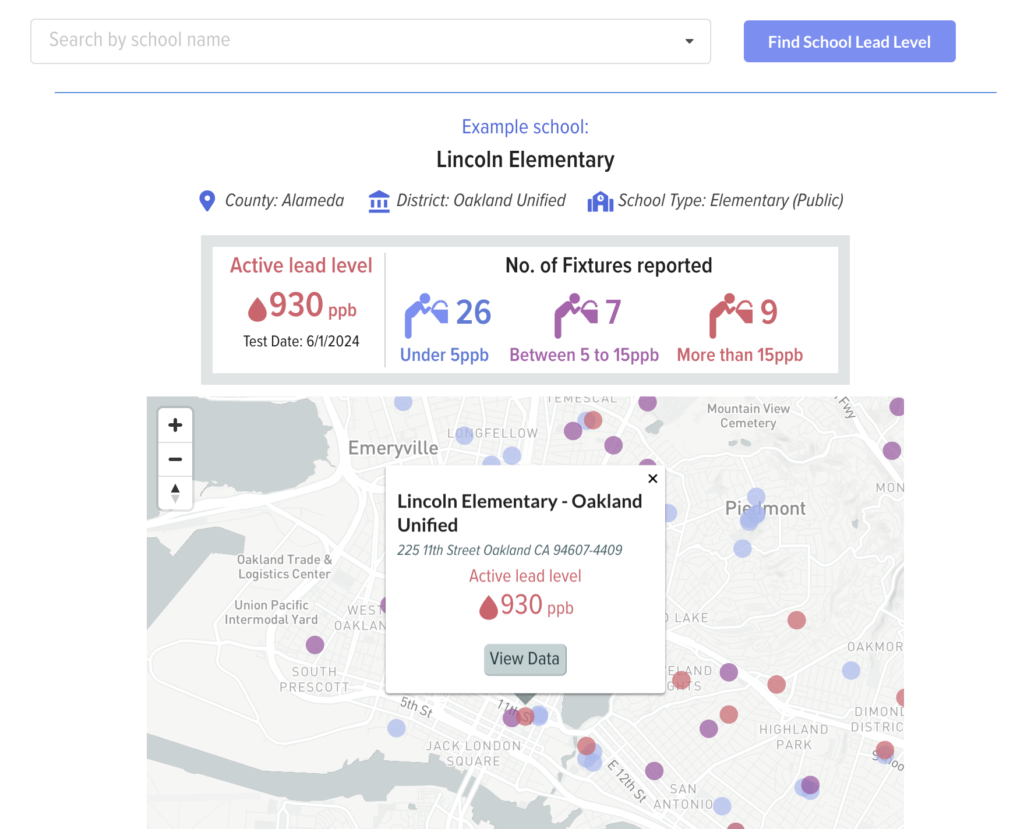
Koinonia Family Services is one of the foster family agencies that received a letter of nonrenewal. Their policy expires in 2025.
Credit: Ourpromiseca/Instagram
A seismic disruption of the foster system is underway in California, with no clear solution in sight for the 9,000 school-aged children whose lives and schooling may be severely impacted.
Most foster family agencies in California either lost liability insurance coverage on Sept. 30 or will lose it once their current policies end after their insurer pulled out of the market.
“A blanket non-renewal would cause a collapse of the California foster family system,” the company, Nonprofits Insurance Alliance of California, acknowledged recently.
The agencies cannot remain open without liability insurance, and few companies offer the required coverage for the agencies, which manage thousands of foster families caring for roughly 9,000 foster children statewide.
Some agencies that managed to acquire coverage in recent weeks complained that the premiums are exponentially higher than what they paid previously.
The insurance crisis currently affects only the foster families managed through the state’s more than 200 agencies, not those managed by their local counties. The impact may be far-reaching, however, especially if counties have to take on a significant number of foster families from agencies.
Families are screened and certified to foster in two ways: directly by their local counties or through private nonprofits that counties contract with called foster family agencies.
No matter how a foster care family obtains its certification, it must retain insurance to protect against potential liabilities.
As agencies decide on their next steps, advocates say educators should keep in mind that some of their students might be part of the foster youth at risk of being displaced from their homes.
This guide explains how the crisis occurred, what it means for foster youth, and what school staff can consider as it unfolds.
What do foster family agencies do?
Agencies are known for providing 24/7 support to foster families, which can include, but is not limited to:
- Training foster families to advocate for children’s educational rights, such as establishing individualized education plans
- Facilitating reunification visits between the foster youth and their biological family
- Providing tutoring services
- Providing transportation to and from extracurricular activities that the foster parent might not be able to work into their schedule
- Supporting foster families as they become mentors for biological parents reunified with their child
Families fostering through agencies often expect to receive a higher degree of support than a county might be able to offer.
Why is this happening?
Nonprofit Insurance Alliance of California previously insured 90% of foster family agencies in California, but they issued letters of nonrenewal to all of those agencies in late August.
The company said foster family agencies are “uninsurable” because they are “being set up as scapegoats” and “held accountable for the wrongful acts of others beyond their scope of control” in cases where children are harmed.
The nonrenewal letters came less than a year after a jury awarded $24.8 million in December to three siblings who were sexually abused in a foster home certified by a Northern California foster family agency that failed to complete many of the required screenings and assessments prior to placing children in the home.
The nonprofit insurance alliance insured the agency and initially rejected multiple settlement offers from the three siblings. The insurer instead took the case to trial, where the jury awarded a settlement higher than the siblings’ initial offers.
The non-renewal decision also came after recent legislation extended the statute of limitations for reporting child sexual assault and provided a three-year window for victims to sue in cases where the statute of limitations had expired. The changes also allowed for damages to be tripled in certain cases.
Who is impacted by the insurance challenge?
The challenge affects foster youth and families whose lives are in limbo as their agencies confront the issue, agencies that are ending services in the face of sudden increased insurance costs, counties that might be managing greater caseloads amid their own staff shortages as foster families potentially transfer under their care, and the people whose jobs might be on the line if foster cases are transferred from agencies.
Roughly 9,000 youth out of over 41,000 total foster youth in California live with families overseen by agencies.
They are some of the highest-needs children and teens within the foster system, said Christine Stoner-Mertz, CEO of California Alliance of Child and Family Services, which represents foster family agencies. Many are medically fragile, identify as LGBTQ+, are older and sometimes have other teenage siblings, or they have significant behavioral challenges.
The families who foster them are burdened with uncertainty as they figure out if their agency will remain open and if their foster children will remain in their homes.
Counties are verifying the scope of the problem, at times transferring families into the county foster system to avoid displacing children. They are checking in with local agencies to ascertain if they received a notice of non-renewal and how long their policies are in effect, said Eileen Cubanski, interim executive director of County Welfare Directors Association of California.
But counties are rife with problems as it is, with shortages of staff and foster homes.
Tiffany Sickler, executive director of a foster family agency called Koinonia Family Services, received a notice of non-renewal, but their policy doesn’t expire until next year.
Even so, some of her agency’s families have transferred to counties, believing that is their only option for keeping their foster children at home.
Agencies sustain themselves by taking on foster cases; losing a foster family leads to a reduction in revenue and caseloads. If this continues, Sickler said it could ultimately lead to staff layoffs.
What happens to foster youth?
Many children’s lives are expected to be disrupted, particularly those whose agencies are shuttering or losing coverage before they can transfer families to counties or another agency.
In those cases, foster youth might be moved to placements far from their schools of origin, requiring them to transfer and lose connections they may have developed at school.
Some may be moved to placements that allow them to remain at their school of origin, but advocates say the disruption in their home lives is likely to impact their education.
“If you’re worried about where you’re going to sleep, how well do you show up? Even if you’re physically present, how well do you show up to learn in the classroom?” said Cubanski. “It’s those added traumas and stressors, I think, that really play a significant role in the educational trajectory of these youth.”
Some agencies whose insurance policies ended Sept. 30 got coverage with other companies. In such cases, foster youth remain in their current homes with no disruptions. But agencies are reporting increased premiums anywhere between 30% to 400% from their previous coverage.
“Many (agencies) are saying, ‘We don’t know exactly how we’re going to get the money, but we’re going to do this at least for a year’ in hopes that maybe there’s a broader solution that gets put in place to keep kids and families stable,” said Stoner-Mertz. “At this moment, that’s the best case scenario because people are concerned about kids’ stability on a very broad level, and certainly education is a component of that.”
Advocates are hopeful that some relief might come their way via the state. The state’s insurance commissioner, Ricardo Lara, issued a notice in August “encouraging all property and casualty insurance companies licensed or doing business in California” to offer the coverage that agencies need, but it remains unclear how many companies have heeded the call.
“What we need is the state to really step in to really stabilize the market,” said Stoner-Mertz, who said her organization is discussing solutions with the Department of Social Services and the Department of Insurance.
What should educators know?
Advocates say educators and school staff are likely unaware that foster youth may be displaced due to the insurance crisis. They suggest checking in with youth and their foster families to better understand what might be happening with their placements.
On a larger scale, advocates are looking to build a coalition to focus on the insurance issues — and they are hoping that schools will join.
That’s because “schools are facing this exact same problem” of insurers seeking to exit their market due to increased settlements related to child sexual abuse cases, according to Stoner-Mertz and Adrienne Shilton, vice president of public policy and strategy at the California Alliance of Child and Family Services.
“It’s a huge issue far beyond these very niche organizations,” Stoner-Mertz said.
The starting point would be to ensure children are not hurt, she added. If they are hurt, they should have their day in court.
In that process, Stoner-Mertz said the challenge for a coalition would be: “How do we ensure that they’re getting their needs met and that there are systems that are not destroyed in the process that they also need?” she asked.
Can families transfer to their local county or another agency?
They can, but one challenge with transferring to counties is that the families certified through agencies are accustomed to a higher level of support, said Shilton.
Additionally, agencies can work with families who live across the state, making transfers more complex than they may initially appear.
Stoner-Mertz provided the following example: Some families have foster children from different counties. If that family transferred from an agency to a county, “then how does that get sorted out in terms of what county takes on that placement?”
Advocates also have significant concerns about counties’ capacity to take on a currently undetermined number of youth and families.
“It’s a big lift for some counties. … We’ve certainly heard from LA that they are not equipped to take on the number of families that could potentially end up having to be transferred,” Stoner-Mertz said.
Advocates say staffing shortages play a role in that diminished capacity, but often, there is also a difference in philosophy.
County child welfare programs are “very child-only focused” and agencies are family-focused, said Sickler, meaning that counties often provide services solely for children, while agencies often provide services for the entire foster family.
“You can’t just leave the foster families kind of out in the wind and just offer services and programs to the kids that are in their home,” said Sickler, whose agency works with families across 11 California counties. “You have to support the family — I mean, if you want a successful outcome anyway.”
Families can also transfer between agencies, a process recently streamlined by legislation.
Assembly Bill 2496 was initially championed by the Nonprofits Insurance Alliance of California. Its original text included provisions that limited the insurer’s liability, which advocates said deteriorated victims’ rights to sue.
The bill’s text was amended at the eleventh hour, removing the provisions and instead streamlining the transfer of families between agencies by removing administrative burdens.
The company responded to the amended bill by announcing the non-renewals and stating that “foster family agencies are being set up as scapegoats” in claims of child abuse.
They also announced they will immediately terminate coverage, rather than non-renew, of agencies that take families from an agency utilizing the new streamlined process.
The bill will “substantially increase the risk to California FFAs and the children they serve,” the company wrote in the announcement, stating that the bill allows for “transfers with a less-rigorous vetting process.”
The announcement threw a wrench into an already complex series of events, advocates said. “Frankly, what has been the bigger burden has been the insurer itself,” said Cubanski.
“They’ve asserted that the bill makes those families riskier, makes the children less safe,” she continued. “I cannot vehemently enough object to that characterization. It really is about trying to streamline some of the administrative paperwork burden — there is nothing different about the risk or the level of safety of these families.”
A previous version of the story incorrectly noted that the non-renewal decision came after “recent judicial changes” and misquoted the insurance company regarding the agencies’ insurability. The story has been updated to reflect that the non-renewal decision came after recent legislation signed into law in 2019 and to correct the company’s statement on agencies being “uninsurable.”















)
)







)
)